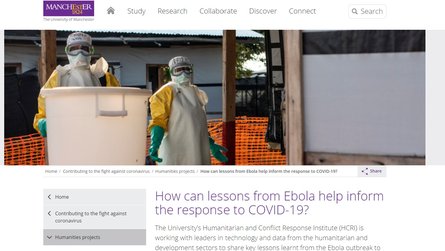
The rapidly evolving COVID-19 pandemic is unlike any previous disease outbreak. However, research from the 2014–16 West Africa Ebola outbreak may hold key lessons for decision-makers.
The spread of the COVID-19 pandemic has caught the world unprepared, resulting in daily increases in confirmed cases and deaths globally. The data picture, however, is often unclear. How many people are really dying from COVID-19? What is the difference between probable and confirmed COVID-19 cases? Why do these numbers change?
To better understand the data, governments, aid agencies and healthcare actors can draw on lessons on the use of technology and data from past outbreaks such as the 2014–16 Ebola outbreak to inform decisions. In many cases during the Ebola outbreak, digital tools to collect data didn’t use the same definitions or standards, or the technologies were incompatible. This made it difficult to compare or merge data about the outbreak.
Digital technologies were most effective when supported with significant investments in human resources and institutional policies and procedures. Where effective, they built on existing tools and processes rather than creating entirely new ones. They also enabled national authorities to more easily share vital information with local health workers.